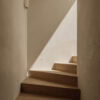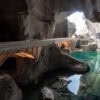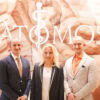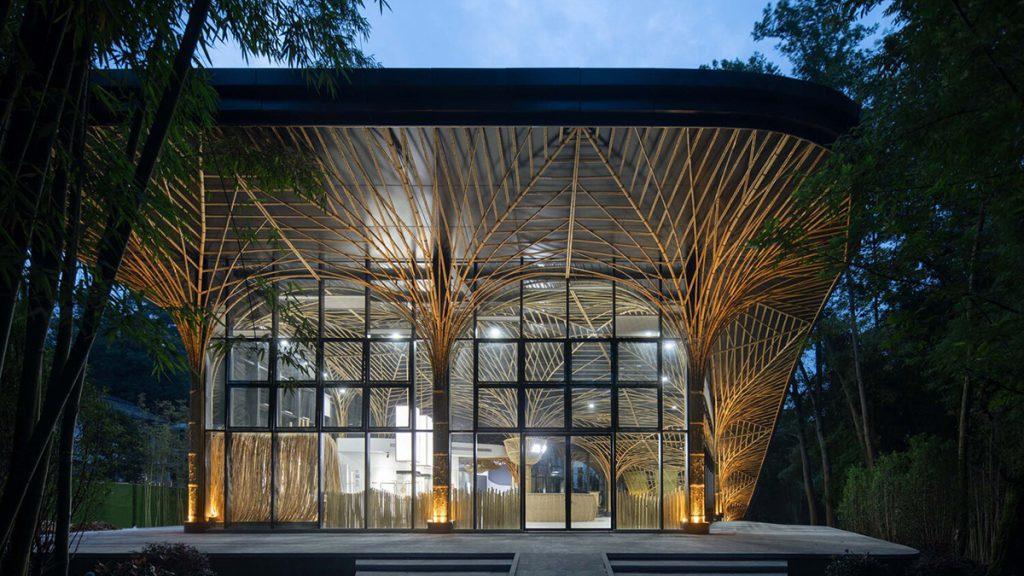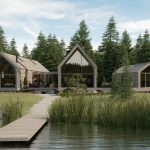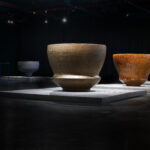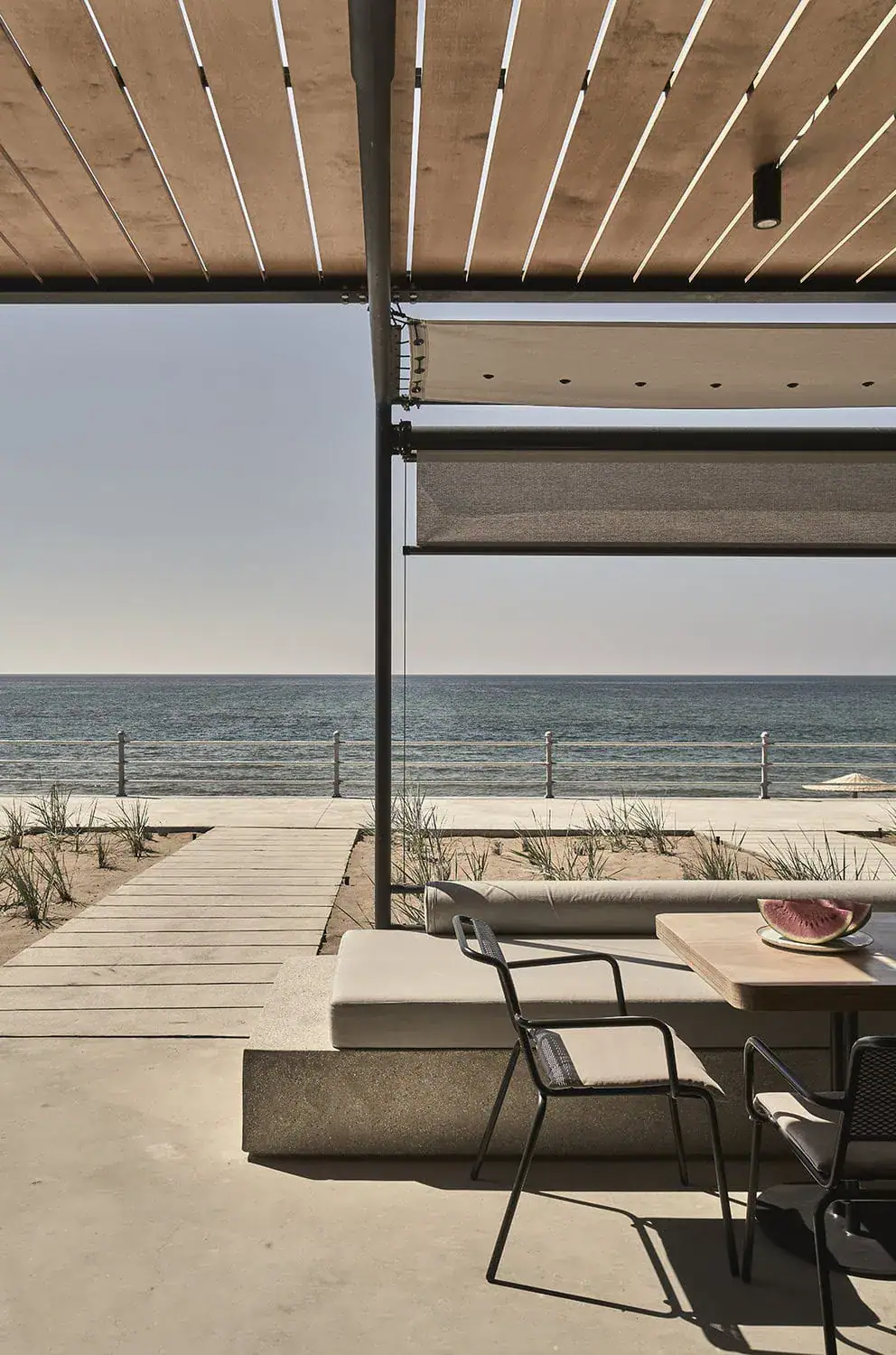In Chengdu, China, UNO Architects have created a forest within a forest with the Qionglai Bamboo Pavilion. A bamboo forest where you can relax, educate yourself and even dance.
Bamboo is more than just a plant in Asia. In traditional Far Eastern culture, it symbolizes beauty, strength, longevity and resilience. On the other hand, it stands for loyalty, for humility, for integrity.
Due to its properties, it also has enormous importance as a raw material. And with its diverse applications, it forms the basis of life for countless people. The Chinese poet Su Dongpo from the Song Dynasty once said: “It is better not to eat meat than not to have bamboo to live on.
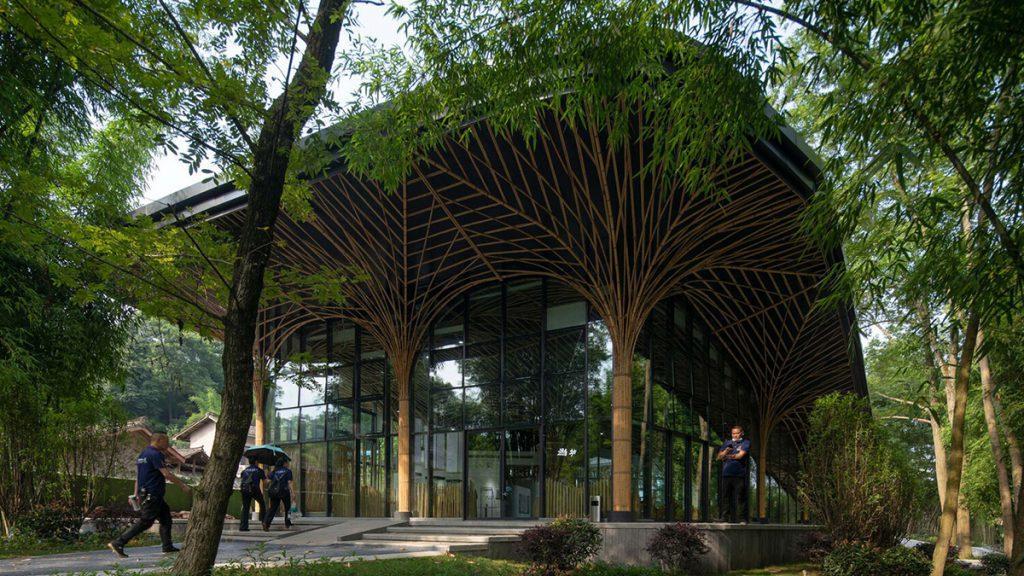
Harmony of man and nature
The importance of bamboo is definitely taken into account by UNO Architects. In collaboration with Lin Rong Studio, SWJTU, they designed the Bamboo Pavilion in Qionglai, a suburb of the megacity Chengdu. Here, in one of the rural communities surrounding the metropolis, so-called Linpan settlements, traditional agricultural practices and culture have been lived for thousands of years.
“Mostly nestled in the forest, especially bamboo forest, Linpan are an organic combination of forests, fields, houses and water, reflecting the harmonious relationship between land and people,” the architecture firm explains. Nowhere else, therefore, would their pavilion be better placed than here: At the northern end of the Baimo River Bridge, next to a bamboo forest covering more than 100,000 hectares.
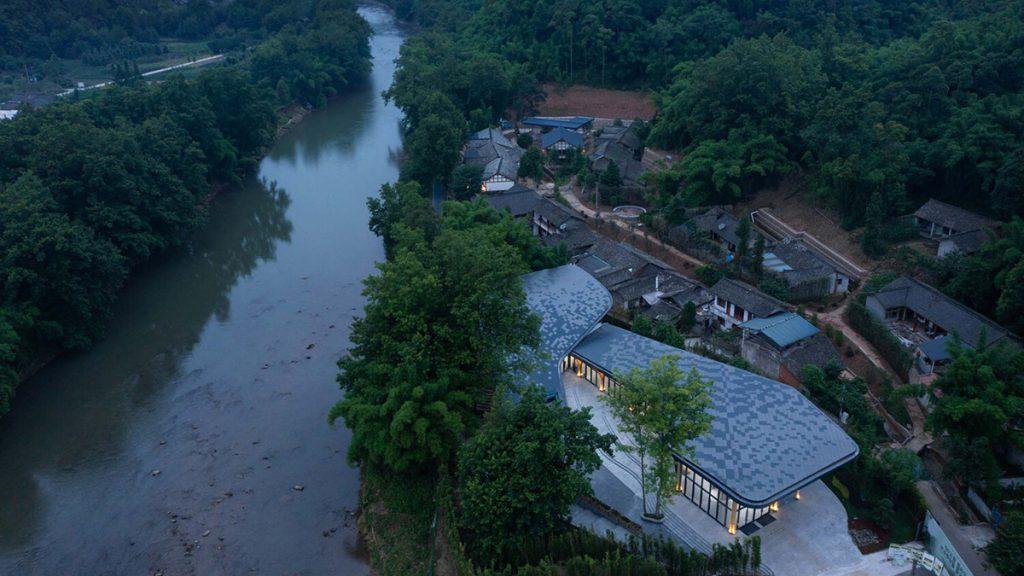
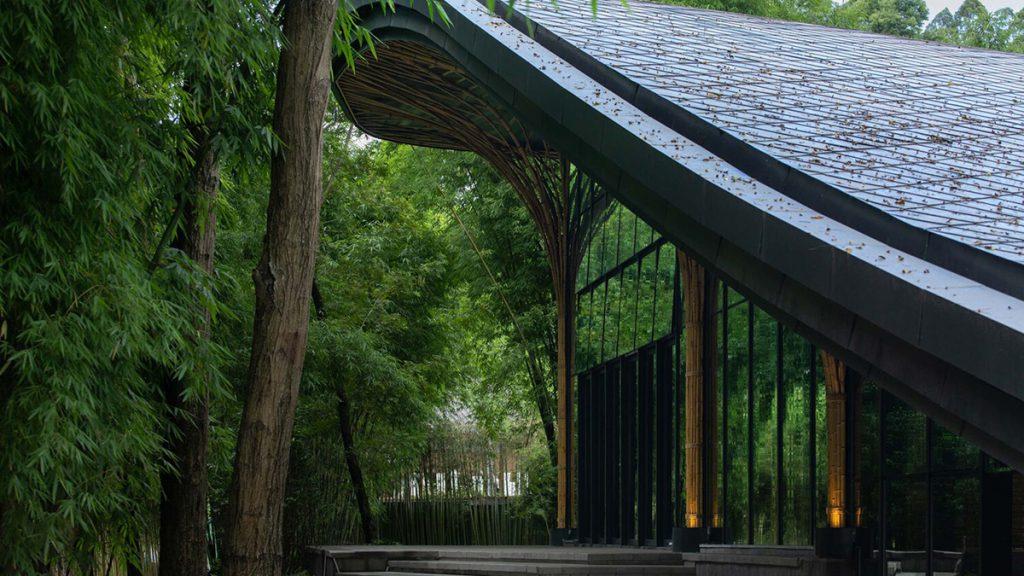
Qionglai Bamboo Pavilion: New perspectives
“When people talk about the beauty of bamboo forests, they often think of a winding path leading deep into the forest,” UNO Architects said. “We try to see it from a different perspective: Endless bamboo forests lay across the gently rolling landscape like ocean waves. Our design wants to capture that moment, wants to define the forms so elegantly created by Mother Nature and express the structure of the neighboring bamboo forest.”
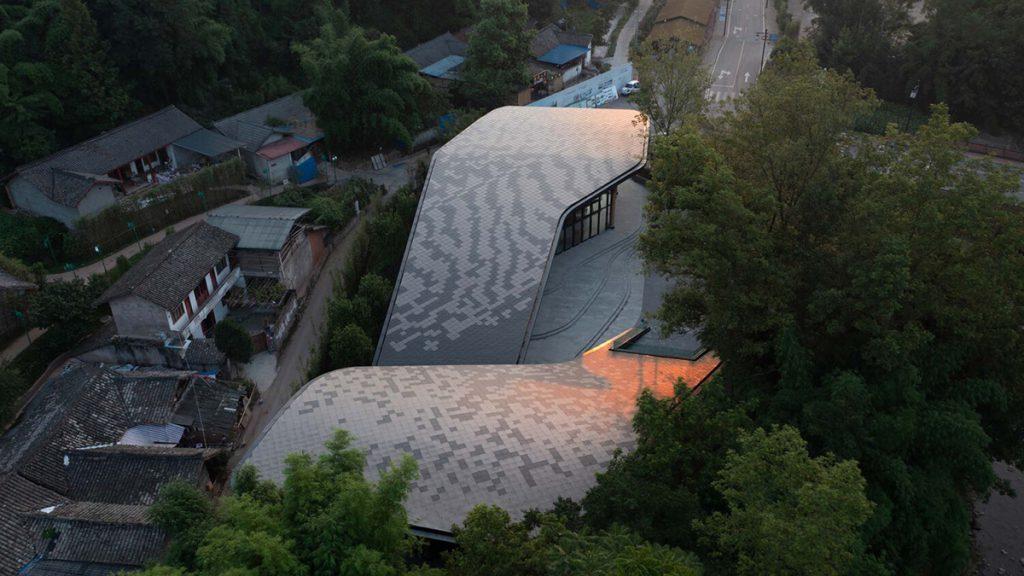
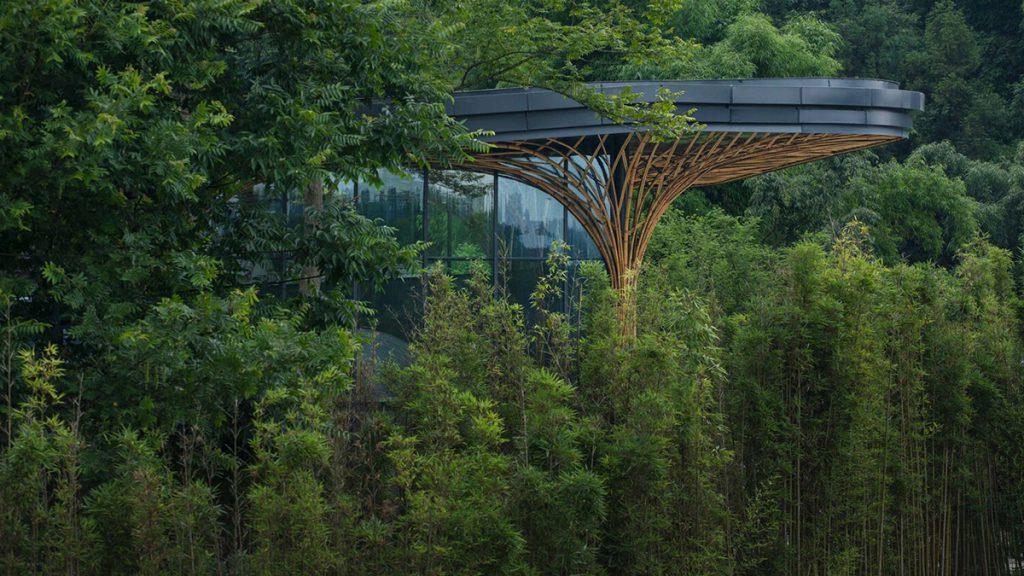
The building is located between the river, the bridge and a village. Two roofs rise undulating curves in opposite directions. One points to the village entrance, welcoming guests from all over the world. The other points to the bamboo forest, symbolizing the beginning of another journey. In the courtyard in between, outdoor exhibitions can be held as needed; the space is also available to locals as a dance floor.
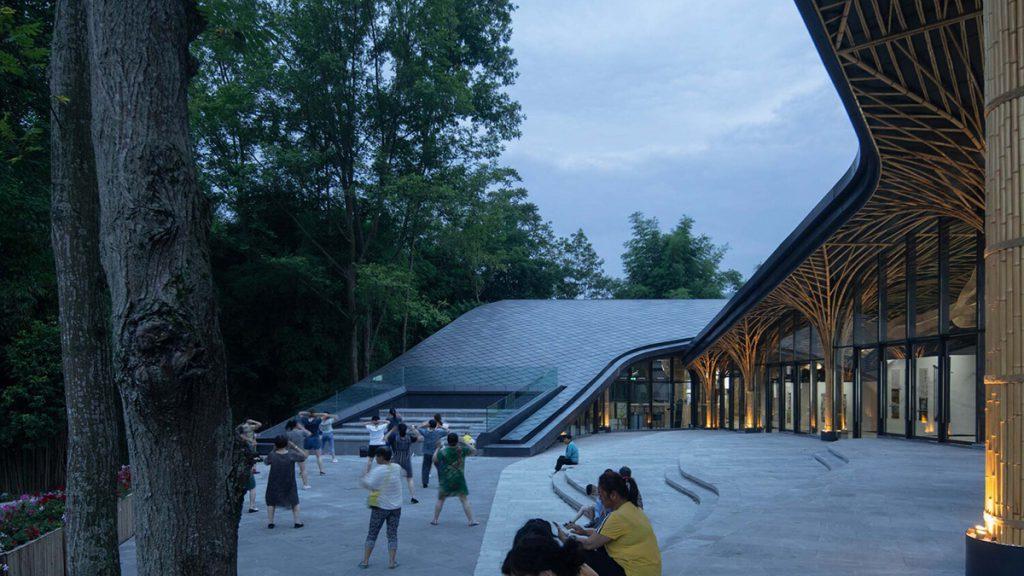
Forest walk
All materials and products for the interior construction come from the surrounding communities. Due to the size of the local bamboo, it could not be used for the main structure. “For this, we designed a structure made of bundled bamboo similar to that which locals can find in their own gardens,” the architects said.
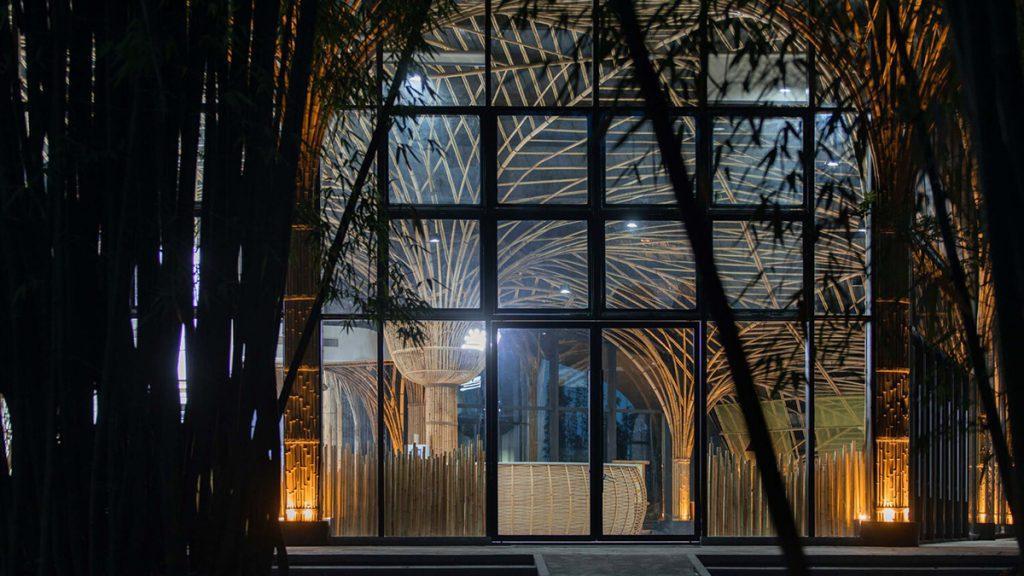
Enhanced by the reflection in the glass facade, the feeling of walking in a bamboo forest is created. The bundled trunks diverge at the top to act as supports for the roofs. The large eaves, in turn, represent the connection between traditional homes and the bamboo forest.
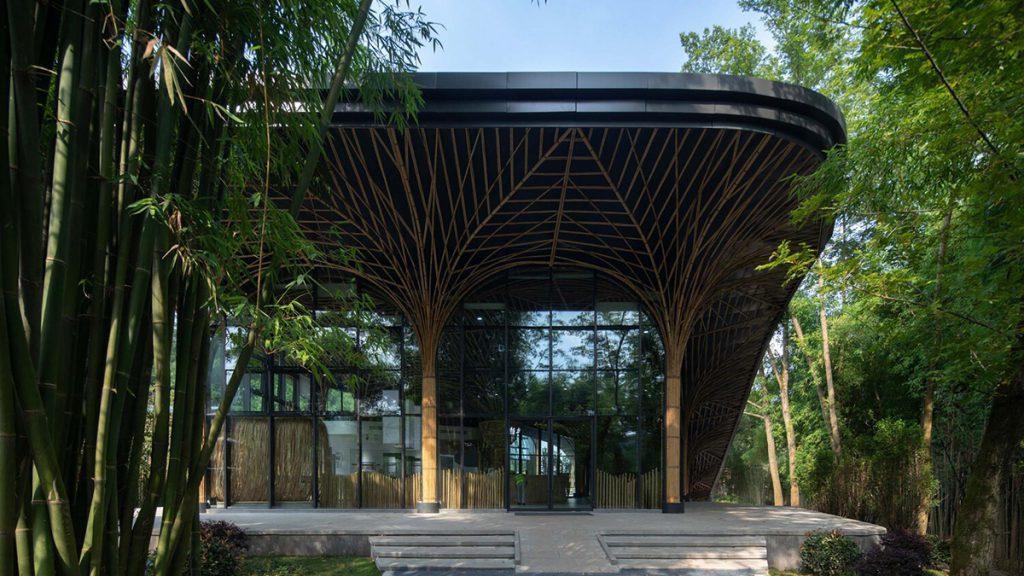
Education, dance, recreation
UNO Architects defined three “identities” for the Qionglai Bamboo Pavilion: “First, it will be a visitor center for the Bamboo Forest Landscape Conservation Area, where people can quickly learn about the breathtaking natural beauty through exhibitions. Second, it will host intangible cultural heritage workshops showcasing local bamboo handicrafts that have existed for generations.
Last but not least, the pavilion is a village center for local residents, with space for various activities, from pure relaxation to dancing to public gatherings.”
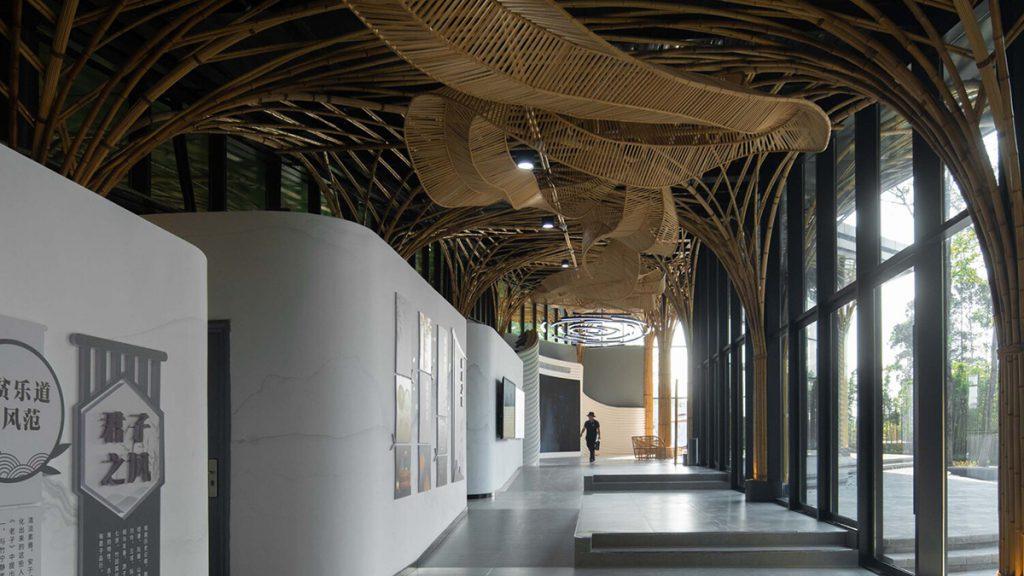
For UNO Architects, the Bamboo Pavilion is not only a place that represents the beauty of nature and that of architecture. “It preserves collective memories as well as cultural heritage. Most importantly, it welcomes visitors from all over the world and creates a connection with the residents and their culture. This is where people are brought together.”
Text: Michi Reichelt
Pictures: Arch-exist Photography

